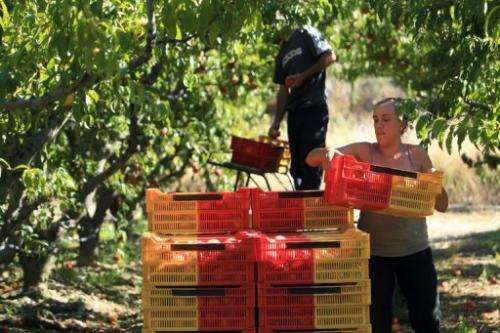Farm subsidies rising in world's biggest economies

Farm subsidies in the world's biggest economies rose in 2012, the OECD said, reversing a long-term trend as governments poured more funding into agriculture despite strained budgets and high food prices.
In its annual report on global farming, the OECD said state support for farming stood at an average of one-sixth of gross farm receipts in the 47 countries covered in the assessment, about 17 percent of total receipts in 2012 compared to 15 percent in 2011.
The Organisation for Economic Cooperation and Development said the rise was unnecessary as high prices for farmers made the timing opportune for governments to cut subsidies that skew food markets and disrupt trade.
"With world markets for food and commodities buoyant and higher commodity prices expected to continue, the time is ripe for governments to credibly commit to wide-ranging farm support reform," OECD Trade and Agriculture Director Ken Ash said.
The report was introduced in Brussels, seat of the European Union, which the OECD said had made "significant steps" in reforming its hugely generous subsidy programme, the Common Agricultural Policy, but that improvements could still be made.
In June, the European Union announced a major overhaul of the much criticised CAP that would include lower subsidies for industrial farms and a boost to young farmers.
Under the current rules, 80 percent of CAP payments go to the top 20 percent of intensive farm businesses since several countries still link the subsidies to production levels.
Under the new proposal, member states would have to ensure that by 2019 each farmer receive at least 60 percent of the average subsidy per hectare.
But the OECD said the reform, which is still pending, "does not represent a major departure from either the current orientation or size of farm support in the 28 country bloc."
According to the OECD, in 2012 subsidies represented 19 percent of farming receipts in the EU, which compared to 7 percent in the United states.
And any efforts to better allocate subsidies in the bloc "would have to be judged only once implemented," the organisation said.
The OECD meanwhile said subsidies in key emerging economies also continued to grow. Last year, farm support rose to 17 percent of total receipts in China and 21 percent in Indonesia.
Brazil however stayed at a relatively low 5 percent and South Africa at 3 percent.
© 2013 AFP



















